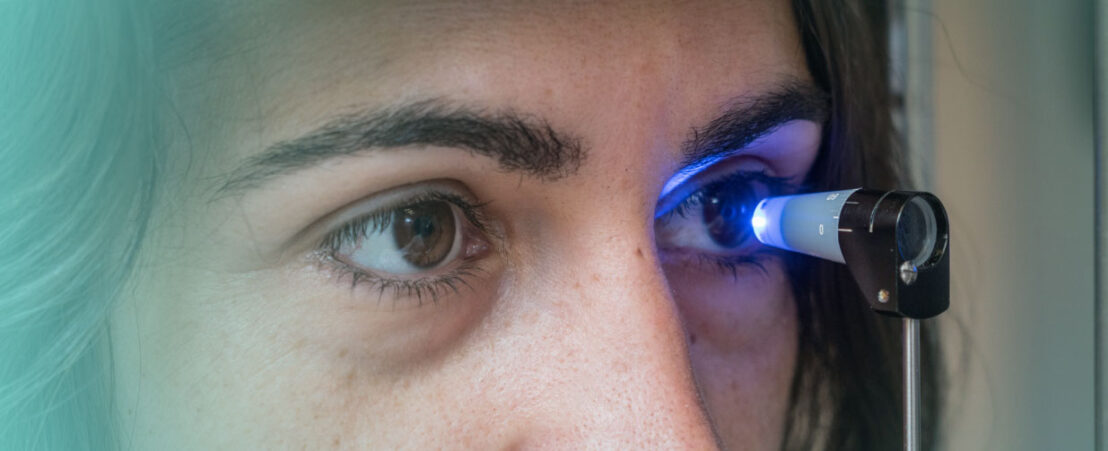
Glaucoma is an important disease because it is common and potentially serious. Approximately 1.5% to 2% of the population over 40 years of age suffers from it and its incidence increases with increasing age. It is the second leading cause of blindness in our population. Nevertheless, this blindness could be avoided by diagnosing and treating the disease properly.
Glaucoma is a chronic, progressive and irreversible disease of the optic nerve. It is characterized by a loss of the field of vision, usually asymptomatic until advanced stages of the disease and, in most cases, it is associated with elevated ocular pressure.
There are some acute forms of glaucoma, with rapid clinical manifestation and usually accompanied by pain and loss of vision, which are less frequent. In these, ocular pressure rises rapidly due to the anatomical configuration of the eye (primary angle-closure glaucoma) or secondary to inflammation, trauma or other ocular disease.
There are many risk factors that can contribute to glaucoma. Among them, elevated eye pressure is the most important. In most cases, elevated eye pressure is secondary to a difficulty in the elimination of aqueous humor (intraocular fluid). Eye pressure is considered normal below 22 mmHg, but some eyes with glaucoma need to maintain lower pressures to prevent progression of the disease.
Other important factors, such as genetic predisposition or vascular factors, also influence each patient to varying degrees.
There are many types of glaucoma, although we highlight the following:
People who are at higher risk for glaucoma should undergo an ophthalmologic evaluation to rule out or facilitate early diagnosis of the disease. Also, if you have already been diagnosed with glaucoma, it is important to comply with the check-ups and treatment prescribed by the ophthalmologist and to recommend that your immediate family members undergo an ophthalmologic examination (aqueous).
In acute glaucoma, the patient usually suffers pain and loss of vision, so he or she usually goes to the ophthalmologic emergency room, which makes it easier to diagnose from the clinical evaluation and the examinations mentioned below.
However, chronic glaucoma (the most frequent) is a silent, slow disease that does not cause discomfort to patients until very advanced stages. Patients are not aware of their disease until it is at a very advanced stage. For this reason, people who are at greater risk of suffering from it should undergo evaluations to rule it out or facilitate its early diagnosis.
The diagnosis of glaucoma is made by a complete ophthalmologic examination, aimed at evaluating intraocular pressure, optic nerve status and optic nerve function.
In addition to the general ophthalmological examination, the following tests are performed:
Once the first visit has been made and according to our doctor’s opinion, the pertinent controls will be carried out for the appropriate follow-up depending on the type and degree of glaucoma. Chronic glaucomas require periodic check-ups throughout the patient’s life.
The main objective of treatment is to preserve the patient’s vision and quality of life. Currently, treatment is aimed at treating the cause in secondary glaucoma and, in all types of glaucoma, at reducing ocular pressure.
The main treatment is medical and consists of the instillation of eye drops into the eyeball by means of eye drops. These eye drops contain different drugs that help lower intraocular pressure. There are many types of eye drops that are effective but may cause mild eye discomfort after application (eye redness, foreign body sensation, etc.). However, it is very important to carry out the treatment according to the guidelines indicated by the ophthalmologist. If the treatment is not strictly followed, the evolution of the disease is worse. Likewise, not applying the drops correctly poses a risk to vision.
Laser treatment is also useful in glaucoma. There are different types:
It should be noted that all laser treatments are performed on an outpatient basis.
Surgical treatment is necessary in a considerable number of cases. Generally, it must be performed when medical or laser treatment is not sufficient to control the pressure and/or stop the progression of the disease.
The most commonly used surgical techniques for the treatment of glaucoma are:
All these surgeries are performed on an outpatient basis but require strict postoperative control and treatment that the patient must perform at home. The success of the surgery depends to a great extent on the patient’s compliance with the treatment prescribed by the ophthalmologist.
Yes, some glaucomas lead to blindness. In fact, this disease is the second leading cause of blindness in our population. However, with the available treatments, in most cases it is possible to control the disease.
In general, a person with glaucoma can swim in the sea. However, it is very important to avoid swimming with glasses on and, if possible, the eyes should be protected with diving goggles. At any sign of redness or irritation, glaucoma drops should never be discontinued. It is also very important to protect the eyes from the sun by wearing sunglasses and a hat when going to the beach.
Dr. Antón, head of the Glaucoma Department, answers some frequently asked questions about the disease.

Contact us or request an appointment with our medical team.